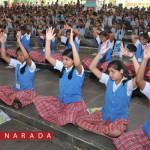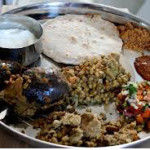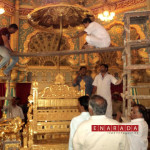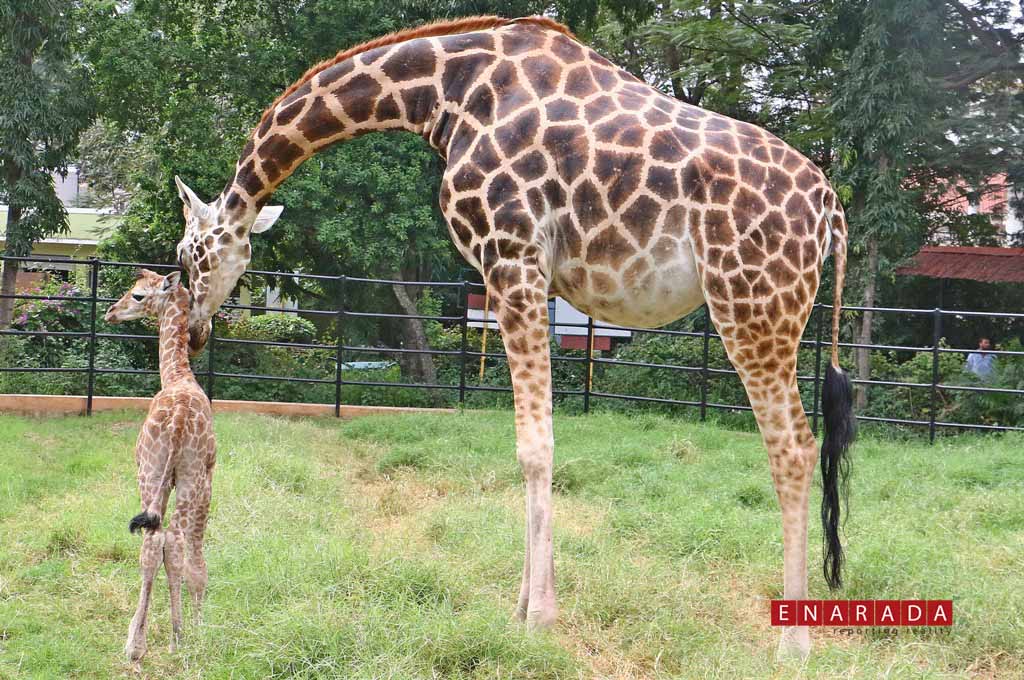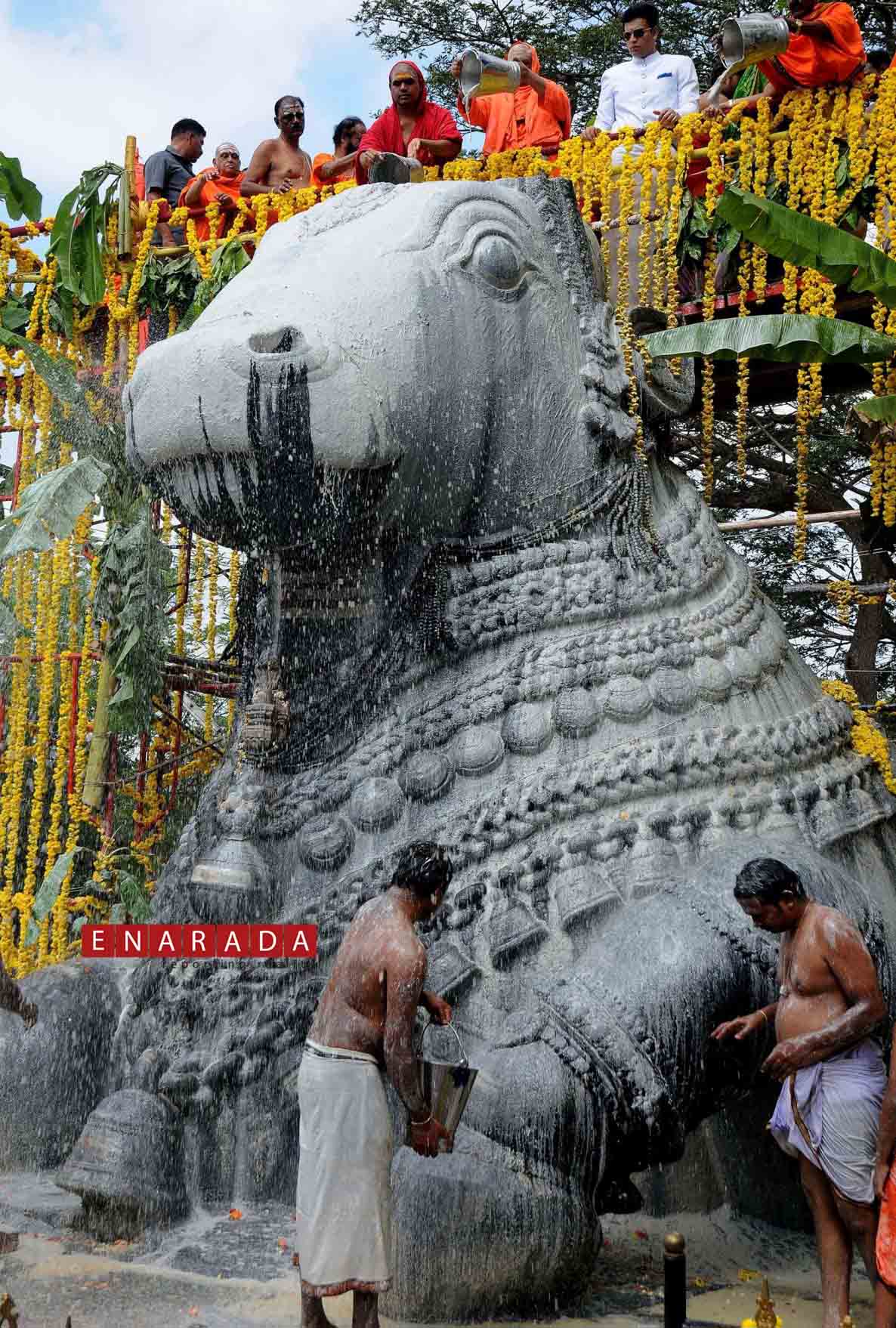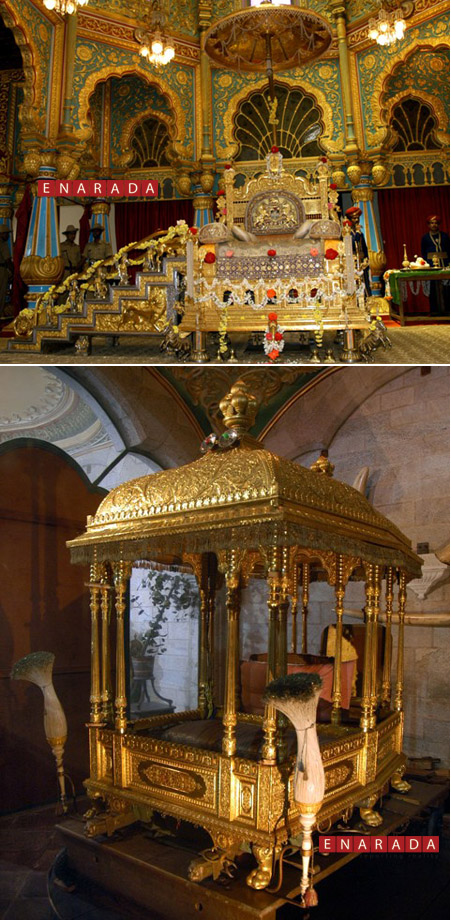
ENARADA, Mysore, October 2,2013:
The two Golden masterpieces-throne and howdah with a history of their own are cynosure of all the eyes during the world famous dasara festivities here in the city of palaces, which will began here from October 5.
This religious event, which marks the beginning of the state festival Nada habba that concludes on vijyadhashyami on October 14 has a history dating back to several centuries.
The state government has been organizing the dasara festivities, the last scion of the wadiyar dynasty, Mr Srikantadatta narasimharaja wadiyar, continues to maintain the traditional link in the observance of religious chores as per the injunctions laid down in the various texts, although in a private.
The essence of the dasara festival revolves around the concept of paying one’s gradtitude to the almighty for showering his blessings in the past and also seeking his grace in the future.
Historical records reveal that after the fall of the Vijayanagara Empire the nayakas of keladi and ikkeri, and then the wadiyars of Mysore have continued the traditional observance of the festival.
Monarchs might have relevance in the democratic set up but the throne, which was changed hands over centuries from different kingdoms, is still, watched with awe as every year the common man gets a glimpse of it during this religious event, which dates back to several centuries.
The palace board sources said that the priceless golden throne belonged to the pandavas, historical texts state that in 1338 the raja guru of the Vijyanagar Empire, vidyanarya, helped harihara first, one of the founders of the vijayanagara kingdom, to retrieve the throne, later used by subsequent rulers of the empire for more than a century,
As per the records available with palace board , In 1609, the ailing governor, Srinarya handed over the throne to raja wadiyar before retiring to talkadu near Mysore. Raja wadiyar asended the throne in 1610 marking the commencement of observance of dasara festivities in this part of the region. The throne was recovered from a room in tippu sultan’s palace at srirangapatanna arfter his fall. It was then used in the coronation of raja wadiyar III in 1799 and since then is remained with the wadiyar’s family.
This bejeweled throne, originally made of the wood of a fig tree, is detailed in a Sanskrit work ‘devatanama kusumanjari’compiled by krishnarja wadiyar III in 1859, the balustraders of the steps of the throne are embellished with figurines, while the golden umbrella has festooned and the four sides decorated with vyias and creepers. It has Lord Brahma to the south, lord maheswara to the north and lord Vishnu at the centre, forming the trinity.
To the four corners are the vyias and the four lions, two of the mythological shardulas, two horses and swans in four corners. It was the golden umbrella, featuring in as many as 24 slokas in anusthuba, that is the cynosure of all the eyes, an exquisite work of art, the golden throne, over the years, has undergone a few changes with its height raised and the number of steps leading to the ‘asana’ increased. However, the throne has retained its original artistic decorative features.
The other thrones at the palace are the mayura bajarasna, where goddness chamundeswari is seated, the bajarasa, used primarily for saraswathipura, and the simha bajarasana, generally used by the royal couple for ceremonies.
Even today the throne used by the Mysore royal family during the dasara festivities with scion of the family srikanatadatta narasimharja wadiyar asending the throne during the navarathri in a private durbar inside the palace from 5th October onwards.
Now the throne was under the government custody and during dasara festivities period one month it would be kept for the public view in the palace.
Another golden howdah, which attracted visitors, also an object art. Though exact date of its making is not known it was built by the band of talented goldsmiths employed by the erstwhile Mysore rulers.
The 750kgs golden howdah, which is being used on the vijayadhasmi day on October 14, in the jumboosavari (procession), has two wide seats in rows and is bigger than the interiors of a family car.
The rajas of the Mysore used this howdah in the famous dasara procession which traversed through the thoroughfares of the princely city of Mysore during the dasara every year.
From early 1970s idol of the sri chamundeswari, principal diety of Mysore was being carried in the howdah atop of a caparisoned elephant on the concluding day of the ten day festivities.

![Golden_Throne[1] copy](https://enarada.com/wp-content/uploads/2013/10/Golden_Throne1-copy.jpg)
